ramblings of a wannabe member of the D.P.S.
Last active 60 minutes ago
Don't wanna be here? Send us removal request.
Text
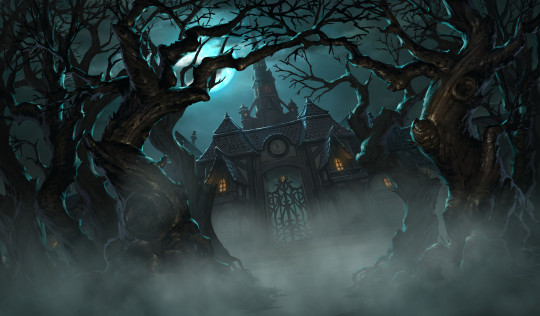
Tableskills: Creating Dread
I've often had a lot of problems telling scary stories at my table, whether it be in d&d or other horror focused games. I personally don't get scared easily, especially around "traditionally horrifying" things so it's hard for me to recreate that experience in others. Likewise, you can't just port horror movie iconography into tabletop and expect it to evoke genuine fear: I've already spoken of being bored out of my mind during the zombie apocalypse, and my few trips into ravenloft have all been filled with similar levels of limp and derivative grimdark.
It took me a long time (and a lot of video essays about films I'd never watched) to realize that in terms of an experience fear is a lot like a joke, in that it requires multiple steps of setup and payoff. Dread is that setup, it's the rising tension in a scene that makes the revelation worth it, the slow and literal rising of a rollercoaster before the drop. It's way easier to inspire dread in your party than it is to scare them apropos of nothing, which has the added flexibility of letting you choose just the right time to deliver the frights.
TLDR: You start with one of the basic human fears (guide to that below) to emotionally prime your players and introduce it to your party in a initially non-threataning manor. Then you introduce a more severe version of it in a way that has stakes but is not overwhelmingly scary just yet. You wait until they're neck deep in this second scenario before throwing in some kind of twist that forces them to confront their discomfort head on.
More advice (and spoilers for The Magnus Archives) below the cut.
Before we go any farther it's vitally important that you learn your party's limits and triggers before a game begins. A lot of ttrpg content can be downright horrifying without even trying to be, so it's critical you know how everyone in your party is going to react to something before you go into it. Whether or not you're running an actual horror game or just wanting to add some tension to an otherwise heroic romp, you and your group need to be on the same page about this, and discuss safety systems from session 0 onwards.
The Fundamental Fears: It may seem a bit basic but one of the greatest tools to help me understand different aspects of horror was the taxonomy invented by Jonathan Sims of The Magnus Archives podcast. He breaks down fear into different thematic and emotional through lines, each given a snappy name and iconography that's so memorable that I often joke it's the queer-horror version of pokemon types or hogwarts houses. If we start with a basic understanding of WHY people find things scary we learn just what dials we need turn in order to build dread in our players.
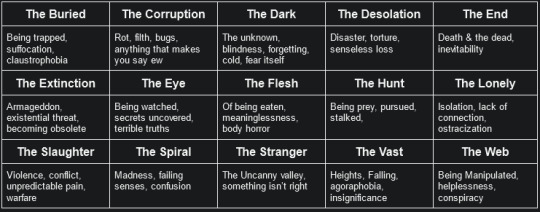
Implementation: Each of these examples is like a colour we can paint a scene or encounter with, flavouring it just so to tickle a particular, primal part of our party's brains. You don't have to do much, just something along the lines of "the upcoming cave tunnel is getting a little too close for comfort" or "the all-too thin walkway creaks under your weight ", or "what you don't see is the movement at the edge of the room". Once the seed is planted your party's' minds will do most of the work: humans are social, pattern seeking creatures, and the hint of danger to one member of the group will lay the groundwork of fear in all the rest.
The trick here is not to over commit, which is the mistake most ttrpgs make with horror: actually showing the monster, putting the party into a dangerous situation, that’s the finisher, the punchline of the joke. It’s also a release valve on all the pressure you’ve been hard at work building.
There’s nothing all that scary about fighting a level-appropriate number of skeletons, but forcing your party to creep through a series of dark, cobweb infested catacombs with the THREAT of being attacked by undead? That’s going to have them climbing the walls.
Let narration and bad dice rolls be your main tools here, driving home the discomfort, the risk, the looming threat.
Surprise: Now that you’ve got your party marinating in dread, what you want to do to really scare them is to throw a curve ball. Go back to that list and find another fear which either compliments or contrasts the original one you set up, and have it lurking juuuust out of reach ready to pop up at a moment of perfect tension like a jack in the box. The party is climbing down a slick interior of an underdark cavern, bottom nowhere in sight? They expect to to fall, but what they couldn't possibly expect is for a giant arm to reach out of the darkness and pull one of them down. Have the party figured out that there's a shapeshifter that's infiltrated the rebel meeting and is killing their allies? They suspect suspicion and lies but what they don't expect is for the rebel base to suddenly be on FIRE forcing them to run.
My expert advice is to lightly tease this second threat LONG before you introduce the initial scare. Your players will think you're a genius for doing what amounts to a little extra work, and curse themselves for not paying more attention.
Restraint: Less is more when it comes to scares, as if you do this trick too often your players are going to be inured to it. Try to do it maybe once an adventure, or dungeon level. Scares hit so much harder when the party isn't expecting them. If you're specifically playing in a "horror" game, it's a good idea to introduce a few false scares, or make multiple encounters part of the same bait and switch scare tactic: If we're going into the filthy gross sewer with mould and rot and rats and the like, you'll get more punch if the final challenge isn't corruption based, but is instead some new threat that we could have never prepared for.
Art
362 notes
·
View notes
Text




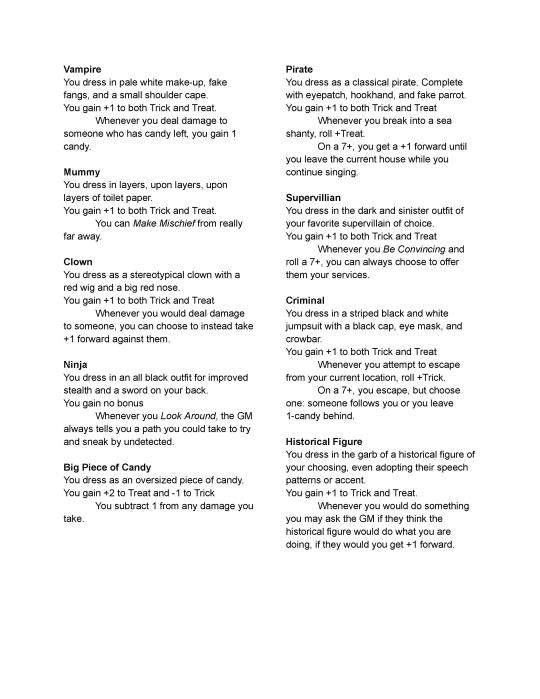


Here’s a tabletop rpg I made called Tricks & Treats! My friends and I play it every year around Halloween, and we always have an absolutely fantastic time playing it! I hope you check it out. If you do play it, let me know how it goes!
[PDF]
449 notes
·
View notes
Photo
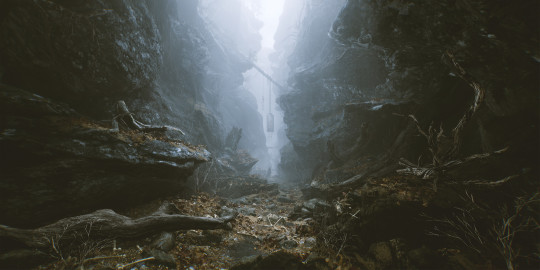

Adventure: Stonemarrow Gorge
Setup: Veiled in mist and scattered with orphaned bones, Stonemarrow gorge earned its name and its infamous reputation by being the dumping ground for a tyrannical baron before his crimes were brought to light.
Thoroughly haunted by a multitude of tormented spirits, ghouls, and other shadowy scavengers, the duke’s darkest secrets still linger in the concealed oubliette at the canyon’s terminus.
Adventure Hooks:
With the queen’s justice dispatched and the old duke put to death, his replacement is eager to be rid of the ghost stories that fester out of the gorge like a festering wound. Looking to leverage the party’s reputation as trusted do-gooders, the new baroness arranges for them to escort a high-ranking cleric through the desicrated land and finally drive out the evil that roots there.
A bard approaches the party with hat in hand. His brother was a political agitator in the time of the old baron, spreading word of the wicked noble’s crimes and rallying a resistance against his abuses of power. For the crime of sedition, the bard’s brother was quietly disappeared one night never to be seen again. The bard never had any word of his brother’s demise, and is willing to lend his talents to the party’s service if they would search through the Stonemarrow Oubliette . Imagine the party’s surprise when they discover the brother still alive…. or atleast still captive. Long weeks of torture and being left to die have transformed the brother into a vampire, half feral and subsisting off the rats that creep into his cage. Will the party rescue their charge or put the prisoner out of his misery ?
There are many more horrors waiting within the baron’s oubliette, where the very worst of his abuses attracted the attention of a dark spirit that still lingers there to this day, eager for more victims.
Keep reading
278 notes
·
View notes
Text
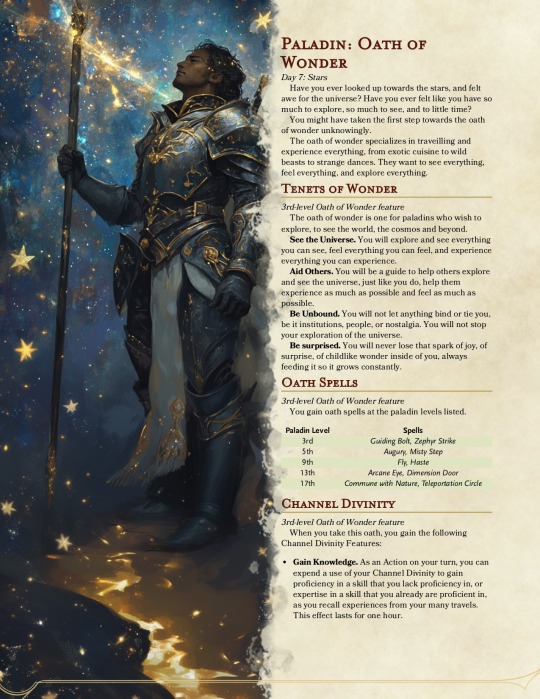
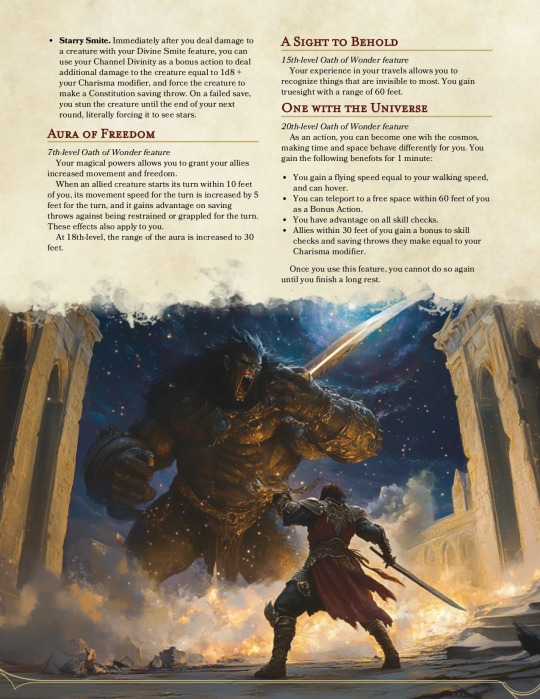
Day 7! Oath of Wonder!
I wanted something nice and wholesome for today, so I came up with a paladin!
The absolute hardest part about this was getting the thing to upload, my wifi did NOT want to cooperate. I've had it finished for an hour now.
161 notes
·
View notes
Text
just once I want to see a good post critiquing makeup culture that doesn’t turn out to be made by some janky radfem blog
356K notes
·
View notes
Text
How to Argue Like an Asshole
Good evening, friends, let me tell you some Secrets on how to argue like (and with) assholes. I’m writing this because I keep running into a particular asshole, and I need to stop engaging with them, and so this is an instruction sheet for myself as well as you guys.
First, try to avoid assholes; they don’t deserve your time and energy. But, if an Argument is unavoidable, here are a few tips on how to emerge unscathed.
Let go of the idea that you’re going to win.
You’re not gonna win. Nobody wins in an argument with an asshole. But, on the other hand, you can make them lose. You can deprive them of their entertainment and their triumph.
How???
Do not present your side of this debate.
This is so counter-intuitive for most of us who believe in things like, oh, science, or real facts, or the idea that real facts can be determined by science. Here’s a cool terrible thing about humans: certainty has nothing to do with facts. And when people are certain, that is when they become assholes.
When someone’s only goal is to win an argument, any real evidence or facts you give them is just ammunition for them to turn against you.
You will not convince them. So what should you be doing?
Destroy their arguments.
This is a thing of joy, because it’s what assholes are used to doing. They are, at heart, morons who don’t know how to construct, only how to destroy.
I used to be super emotional about arguments like this. I couldn’t think of anything to say while the other person ranted on about their horrifying bigotry. Now I’m a lawyer, and I’ve learned to weaponize my essentially nitpicky nature. For money.
So here are some easy tactics you can remember and deploy:
- Make them define the words they use. Nitpick the definitions.
- Turn questions back on them. If they ask you “why do you believe x”, ask them why they believe y. If they pull some “I asked first” shit, ask them why they’re afraid to defend their beliefs.
- Call them emotional. If possible, pick out specific emotions. This is especially devastating when you’re debating a man, as he will get more emotional as a result.
- “Why is that funny? I don’t get it.” Making people explain mean jokes can be a delight; they just wilt the more you question them about the underlying assumptions.
- Laugh at any especially dumb shit. Like they use some slogan or catchphrase that’s obviously untrue, due to science, or essentially ridiculous, like “we’ve made America great again,” and you just blurt out laughing. If they get mad, tell them – oh, so sorry, I’ll shut up, I’m giving you the floor to talk about your beliefs. I’m respecting you. This is a goddamn power move. It gives you the high ground, and also the implied control over the situation. The floor belongs to you, but you are yielding it to someone because you can.
- If they make an awkward exit, let them. Especially if they call the discussion “political.” It means they’re feeling attacked. Graciously allow them to retreat with their tail between their legs. If they storm off, allow them to do that too. Congratulations; you’ve ended the argument and you don’t have to deal with it anymore.
Basically: hand the asshole a shovel, and let ‘em dig. Relieve yourself of the burden to convince them they are wrong, and just sour their fun instead.
–
Additionally, these are the tactics that assholes use, consciously or subconsciously, all the time. Recognize them. Once you know what they are, you can become immune to the intimidation and belittling tactics.
Good luck.
86K notes
·
View notes
Text
a few years ago, i made a flowchart for my partner in order to convince them to leave a pathfinder group that was actively making their life worse. today i revised my original chart to convince a friend to leave her d&d group that is actively making her life worse.
here is the chart. i promise its utility is not only with tabletop RPGs but it does have a high hit rate for those

67K notes
·
View notes
Text
since the old version of this post was flagged for ‘adult content’…

reblog this post if your account is a trans safe space or owned by a trans person!

along with that, reblog if your account is a non-binary spectrum safe space or owned by someone on the enby spectrum!
183K notes
·
View notes
Text
Because it apparently still needs to be said in order for those in the back to hear it,
Here is a list of things that are
🌟 HUMAN CONSTRUCTS 🌟:
TIME ⏰
LANGUAGE 🈂️
MONEY 💰
GENDER 👫
RACE 🤝🏽
RELIGION ⛩
Let's talk about what being a human construct means.
Human Constructs are social structures meant to be followed en masse as agreed upon systems by which we standardize the human experience. This means that at some point in the history of the universe, these things never existed, and the universe went on just fine without them. Human constructs are made up fantasies. They are not real. If you don't agree with it, guess what, you don't have to! The truest harm has only come from believing that these made up systems serve as some universal truth, and that your version is somehow more true than someone else's. It's all a myth.
Life is an episode of "Whose Line Is It Anyway?", where the rules are made up, and the points don't . The moment you accept that as your truth anything becomes possible.

0 notes
Text
Writing Prompt #2571
"I've got friends now. They're giving me something to look forward to. And it's new and it's different and I'm afraid to lose it, but I think that's a good thing."
"And what happens when if you do? If you leave me now, don't expect any help later."
"I know. But...I'm going to have to make my own choices eventually. And I think I'm going to choose them."
#writeblr#writers on tumblr#writing ideas#writing prompts#writing#writing inspiration#creative writing#prompt list#writers#writing advice
257 notes
·
View notes
Text
Dark past ideas
A dark past can be really intresting in books .here are some ideas:
Mysterious Orphanage Escapee: A character who grew up in a sinister orphanage and narrowly escaped its dark secrets.
Traumatic War Survivor: A soldier who witnessed unspeakable horrors on the battlefield, leaving deep emotional scars.
Secret Criminal Past: A reformed criminal who once led a life of violence, but is now trying to make amends.
Kidnapped as a Child: A character who was abducted at a young age and endured years of captivity before escaping.
Tragic Family Betrayal: A character who was betrayed by a close family member, leading to a life filled with distrust and pain.
Cult Escapee: Someone who managed to break free from a dangerous cult, but is haunted by their past involvement.
Haunted by a Violent Crime: A person who accidentally caused harm to someone in their past and has been tormented by guilt ever since.
Dark Addiction: A character who battled a severe addiction that nearly destroyed their life before seeking recovery.
Betrayed by a Friend: A friend who turned out to be a traitor, leading to significant emotional trauma.
Abandoned in Isolation: Someone who was left alone and abandoned in a desolate place, struggling to survive.
Witness to a Murder: A character who saw a murder as a child and was forever scarred by the experience.
Childhood Experimentation: A person who was subjected to unethical scientific experiments in their youth, leaving lasting physical and emotional scars.
Kidnapped and Forced into Crime: A character who was abducted and forced to commit criminal acts against their will.
Betrayed by a Mentor: Someone who was betrayed by a trusted mentor, leading to a deep sense of betrayal and loss.
Survived Natural Disaster: A survivor of a catastrophic natural disaster who lost everything they held dear.
Abusive Relationship Escapee: A person who managed to escape an abusive relationship, but continues to struggle with the trauma.
Witness to a Dark Ritual: A character who stumbled upon a sinister occult ritual in their past, leaving them haunted by the experience.
Family Curse: A character burdened by a dark family curse that has brought suffering to generations.
Identity Theft and Framing: A person who had their identity stolen and was wrongfully accused of crimes they didn't commit.
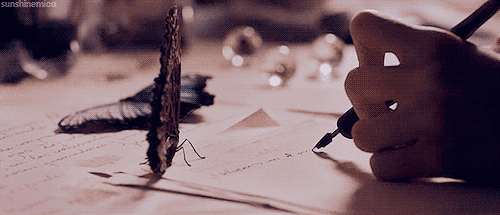
#creative writing#writing#writers block#writing advice#writblr#writers on tumblr#writeblr#writing community#writing tips#words#wattpad#ao3#reader#enemies to lovers#wattpad writer#amreading#novels#darkpast#darkromance
6K notes
·
View notes
Text
Salve For Minor Injuries
A Good present or stocking stuffer this yule. To any loved one who seems to always be bumping into and scraping themselves up.
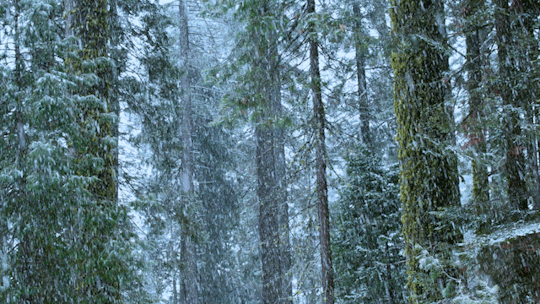
For small abrasions, bruises, or burns, feel free to rub directly on the wound after it has been washed. will help relieve pain and discomfort.
Opus Est~
Double Boiler
Mason Jar-1 Pint
Metal Tin
Carrier Oil
Olive Oil
Herbs
Comfrey ~ 1 Cup
Lavender ~ 2oz
Garden Sage ~ 2oz
Yarrow 2~oz
Essential Oils
Tea Tree Oil
Frankincense Oil
Base, Choose 1
Bees Wax
Coconut Oil
Shea Butter
Creating Medicinal Oil
Firstly place the herbs in the mason jar, making sure they are thoroughly mixed together adding a little from each until the full amount of 14oz of herbs is achieved. Then add the carrier oil slowly, tamping the glass lightly on the bottom of a table every 30 seconds to allow the oil to settle to the bottom.
Continue until the oil fully covers the herbs and then feel free to add your intention to the oil using the chant below. This chant should be said once a week for 3-6 weeks as the oil is steeping. This will infuse it with magick, while simultaneously allowing for the oil to infuse with the medicinal properties from the herbs.
You can also cheat and put it in a pot at low heat and allow it to cook for 8 hours, stirring occasionally. In this instance do the chant every hour or so.
"Oh Blessings Oh Blessings Of Yuletide I bring, Spruce Of The Forest, Joined and Greeted by the First Snow Of Season, Sing proud and bring forth the hearth of life, a single ember to warm and heal those in need, Oh Blessings Oh Blessings Of Yule Tide I Bring."
Feel free to create your own chant, and remember to have fun creating a blessing tailored for your specific loved one :)
After The Oil is done steeping feel free to strain off all the herbs and place the oil to the side for the upcoming step.
Creating The Salve
Here is where the makeshift double boiler comes into play, add in the beeswax, or whichever base you've decided. Allow it to melt fully, then add the medicinal oil, slowly mixing it in, allowing it to become homogenous.
Once fully mixed feel free to add 20-30 drops of essential oils, half tea tree, and half frankincense. This both scents the salve but also adds to the antibacterial properties it already has. Stir until mixed well.
Remove from heat and allow to fully cool. Then place into the container you will be gifting to the other person. After that, the salve is done.
Warning: Check for allergies before using any topical medicine, do not ingest internally, that's a tummy no-no, and just practice common sense fire safety.
Not Liable for any damages caused due to attempts at creating this medicine. Always consult a doctor before trying new herbal remedies
Thank you for letting me teach you today, Catch you next time, The Next Wanderers Tea Time Will Be Early December
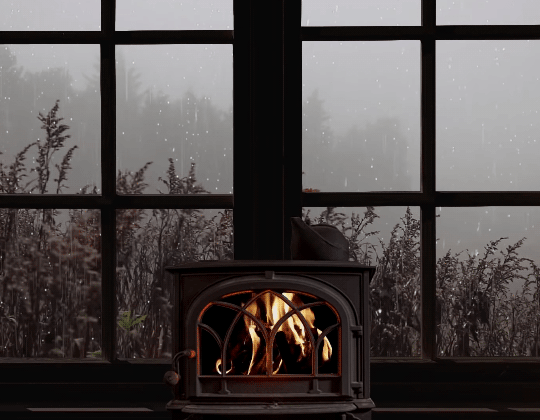
#occult#occultism#occultist#magick#witchcraft#folklore#folklorist#magi#magus#grimoire#grimoires#witch#witchblr#witches#witchythings#witchlife#pagan witch#alchemist#WanderingSorcerer#ancestors#Dark magic#dark magick#herbalism#green witchcraft
52 notes
·
View notes
Text

#writers#writers on tumblr#writing#writing prompt#writer#my writing#daily writing prompt#daily writing#writing tool#story#write it
53K notes
·
View notes
Note
Do you have any tips on how to create a villain?
Hi :)
How to create a villain
A good villain is ultimately what makes a hero heroic and is therefore a very important part of your story.
Why do we need a villain?
opposite of the story’s hero
their goals and motivations oppose those of the hero
the hero is reacting to the actions of the villain
showcases the hero’s weaknesses
the character of the villain should be one of your priorities while planning the story
Types of villains
human villains
fantasy villains (with magical abilities, superpowers, etc.)
animal villains (e.g., Jungle Book)
abstract villains (an idea, a society, a corporation, etc.)
if you make your villain more abstract, it can have advantages, but it also makes it harder for your readers to relate to them and understand them
if you have an abstract villain, think about using human representations of that villain for your readers to project their feelings and thoughts onto
more specific types of villains:
likeable villain
unsympathetic villain
unpredictable villain
Characteristics of a villain
There are many different types of villains, but they also share a few similar characteristics:
own beliefs and morals – What do they believe in? What is morally correct for them? Do they see themself as bad/evil? How far will they go? Do they make exceptions for some people or do they not care at all? Maybe they want to do the right thing, but they go about it the wrong way.
goals and motivation – goals are things they want to have or want to accomplish, but motivation is even more important, it explains why they want or need their goal to be fulfilled, you need to invest time into giving your villain a (at least for them) plausible reason for what they are doing
connection to the hero – the hero reacts to the villain’s actions, maybe their fates are intertwined, maybe the hero’s actions in the past led to them becoming the villain, the villain is interrupting and then furthering the hero’s character development the same way the hero is doing to the villain’s development
worthy opponent – being especially powerful, clever, a specialist in something the hero is not, seemingly unbeatable until the end
compelling backstory – people are usually not born bad, it’s something they’ve become over time, it explains the motivation, probably not just one defining moment, if you want one event that changed them, then also think about the reactions from others to that event or what happened afterwards that made them turn evil
similar characteristic to the hero – think about where it went wrong, where did they turn to the dark side? Like I said before, a tragic event does not automatically lead someone to become a villain. Losing their parents young for example can turn them either into the villain or the hero, decide why they turned in that direction that they did
More tips:
Make your villain interesting
your reader should love to hate, but also hate to love them in a way
give them their own character arc and show development
make them special the same way your hero is special
give them a magnetic personality
don’t make them too predictable or the readers will lose their fear of them
Humanise your villains
not born evil, maybe they were corrupted
nothing more frightening than seeing yourself in a villain
give them positive qualities
make the readers sometimes sympathise with them
give them moments of relatability
your readers should be interested in the villain, but not necessarily root for them (only if that’s your true intention), because it could undermine your hero’s actions and motivation
Make them lose
If your story doesn’t end with evil ruling over the world, you need to know how to make the villains lose:
give them weaknesses
let them be a slave to their own moral code
let them have fatal character flaws that in the end the basically defeat themself
give them a worthy ending, something appropriate for a great opponent
Good luck creating believable villains!
- Jana
#how to create a villain#how to write#writing help#writing advice#writing ideas#writing tip#writing tips#writeblr#writers on tumblr#writers
6K notes
·
View notes
Text
Hurt/Comfort Dialogue Prompts
Part III
"We will get through this. Together."
"You can hold my hand, if it makes you feel safer."
"It will become easier. Maybe not today, but soon."
"Lay your head on my shoulder and try to sleep."
"There is nothing wrong with needing a bit of help."
"I'm here for you. Today, tomorrow and every day after."
"Please trust me to help you."
"Thank you for getting me through this."
"I'm really hoping to see you smile again soon."
"Nothing a good night's sleep can't fix."
"Show me that bruise please."
"I'm taking care of you now."
"Do you feel safe enough to come with me?"
"Let's dry those tears and get you some water."
"I'm going to be here when you wake up."
"This will all soon be in the past."
"Can I please hold your hand?"
"Sorry, I'm being so difficult for you."
"Don't apologize for needing help every now and then."
"Let's get you in the shower and we'll take it from there."
Hurt/Comfort Masterpost
If you like my blog and want to support me, you can buy me a coffee or become a member! And check out my Instagram! 🥰
#writing inspiration#writeblr#prompt list#creative writing#writing prompts#hurt comfort#writing ideas#writers on tumblr#dialogue prompts
3K notes
·
View notes
Text
APPALACHIAN FOLKLORE 101
Appalachia has a rich history in the united states, which goes farther back than most tend to give it credit for. The Appalachian mountains are millions of years old, and humans have only lived in the region for 16,000 years or so, which means the mountains are bound to hold some mysteries and legends.
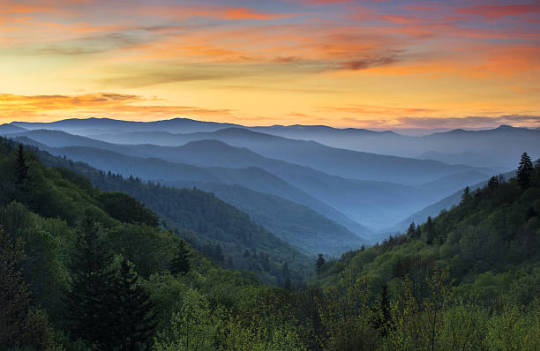
Many of these stories, and folk practices originate from the Native Americans, specifically Cherokee, and are mixed in with the superstitions brought over from the old world specifically English, Irish, and Scottish. As well as the practices brought over from the African Continent During the Slave Trade. The Native population assisted the early settlers in Appalachia with ways to survive the area, grow food, and even forage for one of Appalachia's staple foods, RAMPS!!!
Let's delve into the history of Appalachian Folklore and the origins of everyone's favorite stories.
Cryptids and Myths
This is one of the most famous aspects of Appalachian folklore and one which outsiders know the most about, Appalachian Myths and their Cryptids that follow. Below I will go over a few of the more famous ones, which many have learned about, either second-hand or through living in the area.
The Moon-Eyed People
There was a group of humanoids called the Moon-Eyed People, who were short, bearded, and had pale skin with large, bright eyes. They were completely nocturnal due to their eyes being extremely sensitive to light. Although not mythical, they were considered a separate race of people by some. The tribes viewed them as a threat and forced them out of their caves on a full moon night. They were said to have scattered to other parts of Appalachia as the moon’s light was too bright for their eyes. There are some early structures that are believed to be related to the Moon-Eyed People, dating back to 400 BCE. Some theories suggest that they were early European settlers who arrived much before Columbus discovered the Americas. Other theories suggest they were people who had Albanism.
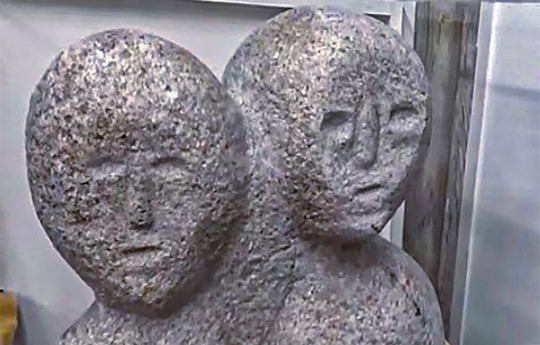
Image of The Moon Eyed People Statues in Murphy, North Carolina
Spearfinger
Spearfinger is a Cherokee legend of a shapeshifting, stone-skinned witch with a long knife in place of one of her fingers. She often was described as an old woman, which she would take the form of to convince Cherokee children that she was their grandmother. She would sit with them, brush their hair until they fell asleep, and then kill them with her “spear finger.” She had a love of human livers which she would extract from the bodies of those she killed. It was said she left no visible scars on her victims. She carried her own heart in her hand to protect it, as it was her one weakness. As the legend goes, she was captured and defeated with the help of several birds that carried the information to defeat her. Though she has been destroyed, sometimes you can hear her cackles and songs throughout the mountains.

Image of SpearFinger Cherokee Legend
W*ndigo
This spirit is said to go to where its name is called allowed so since most of us already know the name I won't be writing it out in completion. So out of respect for some of our native readers, it will remain censored
The W*ndigo is a creature, sometimes referred to as an evil spirit, that is said to be 15 feet tall with a body that is thin, with skin pulled so tight that its bones are visible. Many native legends view it as a spirit of greed, gluttony, and insatiable hunger. It is a flesh-eating beast that is considered most active during the colder months, and its presence is easily felt and smelt. It has been described as having a distinct smell of rot and decay due to its skin being ripped and unclean. It produces an overwhelming urge of greed and insatiable want. Most notably, it is not one to chase or seek after its prey; instead, it uses its terrifying mimicry skill. It often mimics human voices, screams, loved ones, or anything that might entice its victim to come to it. In some cases, it is believed the W*ndigo is a spirit that can possess other humans and fill them with greed and selfishness, turning them into W*ndigos as well.
Appalachian Folk Practices
Many of the common Appalachian folk practices stem from things the Native Americans and Enslaved Africans taught them mixed in with cultural practices from Europe. Here I will go over some of the most common practices done by the Appalachian people
Water Dowsing
water dowsing is a practice that has been done for hundreds of years in many different cultures. This practice was brought over by the European settlers and was how many people of the time found where to dig for their water. The practice itself is simple in nature, you take a forked branch from a tree and hold it in both hands and walk around once the stick points down due to the electromagnetic current that's where you dig your well.
this isn't exactly the best way to find water but many people still do it to this day.

Image of Someone Using A Dowsing Rod
Bottle Trees
This practice originated in the Congo area of Africa, in the 9th century A.D. brought to America by the slave trade, in the 17th century. Bottle Trees, were popular in the American South and up into Appalachia, the spirits are said to be attracted to the blue color of the bottles, and captured at night, then when the sun rises it destroys the evil spirits.
This is still practiced in the modern era by many Appalachian Folk Practitioners

Image Of Bottle Trees
SIN EATING
This practice originates from the Ancient Greeks and Egyptians, it branched to many different cultures and has been practiced since antiquity by many Christian and Catholic tribes. And later making its way to America via immigration. The process was once a profession in Appalachia, in which food was placed on or near the deceased and a person dressed in all black would eat the food absolving the dead of all of their earthly sins. This essentially cemented their ability to get into heaven. The practice while sparsely done any more as a profession, it can still be found in many peoples funeral services to this day around the world.
Many cultures still do this practice and the sin eaters usually choose to hide their identity as the practice is seen as taboo to this day.
Popular Herbs To Forage In Appalachia Folk Practices
Wild Leeks or RAMPS!!!
Allium tricoccum, are a species of wild onion native to North America. They are a delicacy, and hold a special place in the hearts of many Appalachians. Native Americans such as the Cherokee ate the plant and used it medicinally for a variety of purposes including as a spring tonic. Early European settlers learned how to Forage from the Indigenous People and continued to eat and use ramps medicinally. Ramps provide many nutrients and minerals and historically have been used to nourish people after harsh winters.
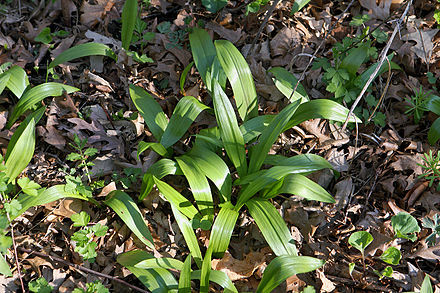
*RAMPS poisoness Look Alike
False hellebore (Veratrum) is a highly poisonous plant that can be mistaken for a prized wild edible, the wild leek, or ramp (Allium tricoccum)
Chicken of the Woods
Laetiporus sulphureus. Chicken of the woods is a sulphur-yellow bracket fungus of trees in woods, parks and gardens. They are delicious and are loved by many foragers, Native Americans, and Appalachians alike. The Native Americans taught the early settlers that these were edible and have been a favorite ever since. Chicken of the Woods is most likely to be found from August through October, but it can be found as early as May and up to December depending on where you live.
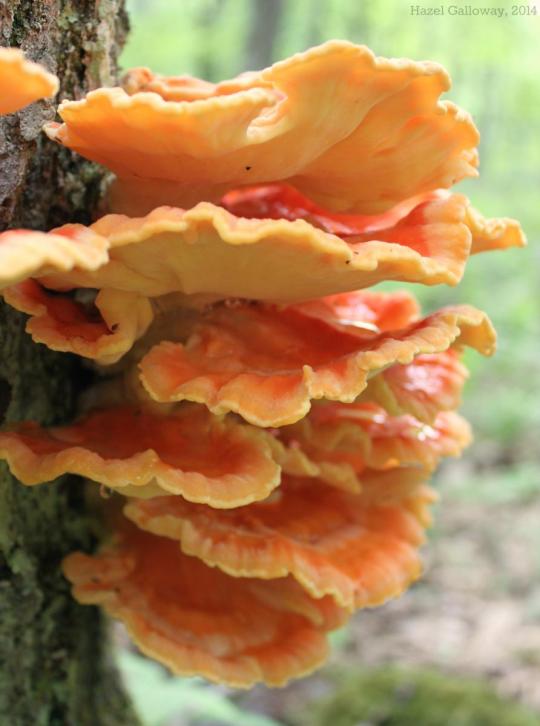
*These have a poisoness look alike, Jack O Lantern mushrooms
The Jack-o'-lantern mushroom should not be eaten because it is poisonous to humans. It contains toxic chemicals that can cause severe stomach upset accompanied by vomiting, diarrhea and headache
PawPaws
The Pawpaw Asimina triloba, is well loved by Appalachian locals as a native fruit with a tropical taste. Pawpaw fruit is the largest tree fruit native to the United States, and its custard-like flesh has been said to taste like a combination of banana, pineapple, and Mango. The pawpaw has been used by Native Americans for centuries for both its fruit and its medicinal properties. Many tribes, including the Osage and Sioux, ate the fruit; the Iroquois used the mashed fruit to make small dried cakes to reconstitute later for cooking. PawPaw season is late summer, look for the smell of rotting fruit, eat the ones that are squishy to the touch.
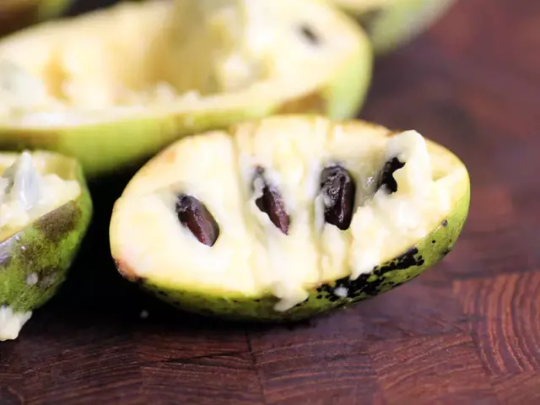
*They resemble mangos on the trees, many options to eat the ones that are on the floor already as they usually have ripened, but you can also ripen them at home.
Appalachia has a rich and beautiful history filled with magic and delicious food. But the only real way to learn about Appalachia is to visit it. Go and speak with locals, learn about the history, their delicious foods, and powerful Grandma magic, and you too will fall in love with Appalachia.
Thank you for sitting down and having Tea with me on the Other side of the Great Divide
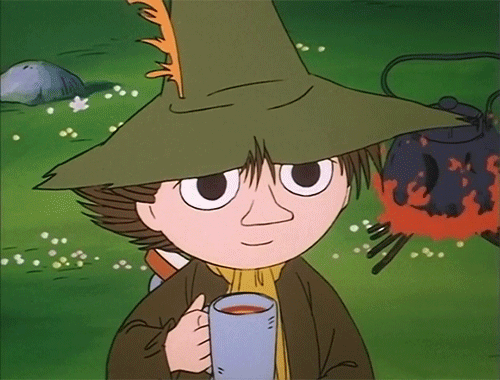
667 notes
·
View notes









